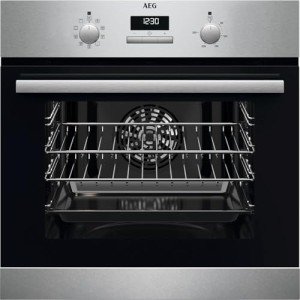
Electric Single Oven
FollowOverview
-
Founded Date noviembre 7, 2012
-
Sectors Seguridad Laboral, Protección Civil y Emergencias
-
Posted Jobs 0
-
Viewed 7
Company Description
Guide To Buy A Single Oven: The Intermediate Guide To Buy A Single Oven
A Comprehensive Guide to Buying a Single Oven: What You Need to Know
When it concerns kitchen devices, few items are as vital as an oven. Whether you’re a devoted baker, a weekend chef, or someone who simply wishes to heat up leftovers, the right oven can make all the difference in cooking and cooking. Among the different types of ovens readily available in the market, single ovens stand apart for their adaptability and area efficiency. This short article will guide you through the vital factors to consider when purchasing a single oven, detailing crucial functions, types, and answering often asked questions.
Comprehending Single Ovens
Single ovens, as the name suggests, include one cooking cavity. They are designed to deal with various cooking jobs, consisting of baking, roasting, barbecuing, and broiling. Ideal for compact kitchen areas or those who do not need the additional area used by double ovens, single ovens can be built into cabinets or stand alone.
Types of Single Ovens
Single ovens can be found in different types, each offering distinct advantages. Here are the primary types to consider:
| Type | Description |
|---|---|
| Traditional | Uses leading and bottom heating aspects for conventional cooking designs. |
| Convection | Employs a fan to circulate hot air, leading to even cooking temperature levels. |
| Wall Ovens | Built into the wall for space-saving design while remaining user-friendly. |
| Steam Ovens | Introduces steam for moist cooking, excellent for baking and reheating. |
| Microwave Ovens | Integrates cooking and reheating performances with microwave technology. |
Secret Features to Consider
When looking for a single oven, it’s crucial to assess different functions that can enhance cooking experience and effectiveness. Below are some essential attributes to consider:
-
Size and Capacity:
- Measure the readily available space in your kitchen before selecting an oven. Most single ovens range from 24 to 30 inches in width.
- Capacity typically ranges from 2.0 to 5.0 cubic feet, depending upon just how much you usually cook or bake.
-
Energy Efficiency:
- Look for designs with an Energy Star score to minimize energy intake and lower energy expenses.
-
Oven Types:
- Consider whether you prefer a standard or convection design based upon your cooking choices.
-
Control board:
- Choose user-friendly controls, whether they are digital or analog.
- Touch controls frequently include innovative features like programmable settings and timers.
-
Self-Cleaning Functionality:
- Self-cleaning choices save time and effort. Search for ovens with steam or pyrolytic cleaning choices.
-
Extra Features:
- Features such as hold-up start timers, numerous rack positions, and built-in probes can significantly enhance the cooking experience.
Popular Brands
When buying an oven, it is wise to consider brand names known for their reliability and quality. A few of the popular brands in the market consist of:
- Bosch
- Samsung
- LG
- Whirlpool
- Electrolux
- Frigidaire
Steps to Buy a Single Oven
Follow this structured process to streamline your purchasing decision:
-
Determine Your Cooking Needs:
- Assess your cooking routines and how frequently you utilize the oven.
-
Set a Budget:
- Single ovens can differ significantly in price from a couple of hundred to numerous thousand dollars. Set an affordable spending plan to improve your alternatives.
-
Research study Online:
- Read reviews on numerous models to identify reliability, performance, and functions.
-
Check out Showrooms:
- Visit home appliance showrooms to see the ovens up close, check their quality, and comprehend their features.
-
Request For Expert Advice:
- Consult with sales agents or cooking professionals for recommendations based upon your requirements.
-
Compare Warranty Options:
- Look into the warranty policies. A comprehensive warranty can offer assurance.
Frequently asked questions
1. What is the difference in between a traditional oven and a stove?
Traditional ovens use top and bottom heat sources for cooking, while convection ovens use a fan to distribute hot air, causing faster and more even cooking.
2. Can I set up a single oven myself?
While some homeowners pick to install their ovens, it’s typically suggested to hire an expert to make sure safety and compliance with regional structure codes.
3. How typically should I clean my oven?
Frequency depends on usage. A self-cleaning oven can greatly minimize the frequency, while manual cleansing needs to preferably be carried out seasonally if used regularly.
4. What additional features should I search for?
Look for features such as a timer, delay start, and extra cooking modes like air fry or steam for enhanced functionality.
5. Are gas ovens much better than electric ovens?
The choice in between gas and electric depends mainly on personal preference. Gas supplies instantaneous heat and is often favored by professional chefs, while electric ovens normally provide more constant cooking temperature levels.

Investing in a single oven can raise your cooking experience, paving the way for more enjoyable meal preparation and creativity in the kitchen. As you Buy A Single Oven the ideal oven, consider your cooking practices, the oven’s features, and your offered cooking area. Take your time to explore different options, and by following the guidance offered in this article, you can make an educated choice that meets both your cooking requirements and budget plan requirements.
In summary, the ideal single oven will not just enhance your cooking performance but also make your kitchen a more enjoyable space for cooking exploration. Pleased cooking!
